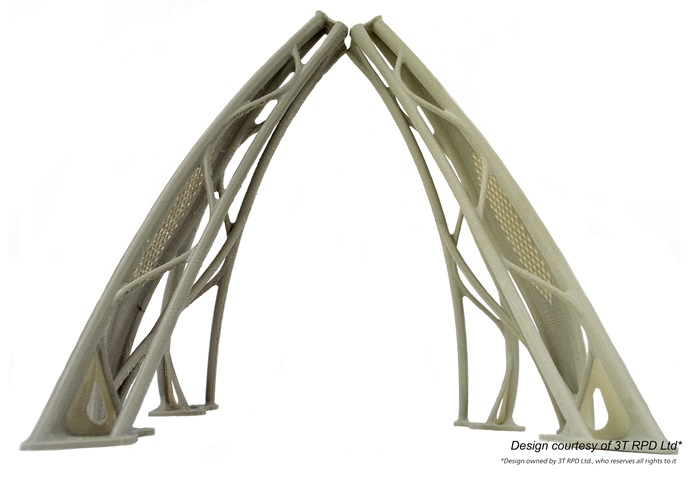Victrex, a UK supplier of high performance polymers is preparing to market newly developed additive manufacturing materials.
One will improve recycling for unsintered powder in selective laser sintering (SLS). In fused filament fabrication (FFF), the company will also produce a filament with better Z-strength than existing Polyaryletherketone (PAEK), a leading material among high-temperature thermoplastics like relatives PEEK and PEKK.

Optimized PAEK for 3D printing
A large portion of currently available PAEK materials were expressly developed for the injection molding industry. Therefore, they are not directly suited for 3D printing applications.
In SLS 3D printing in particular, there is a high refresh rate of PAEK powder. And filaments made from PAEK relative of PEEK, often result in loss of strength across the Z axis when 3D printed using FFF due to poor interlayer bonding.
As a result, Victrex is leading R&D of PAEK materials specifically for additive manufacturing applications.
PEAK improvements
Initial tests have shown that Victrex SLS powders generate lower refresh rates as compared to older grade PAEK materials, improving recycle average for unsintered powder. When laser sintered, the mechanical properties of Victrex PAEK also maintain the same desired properties as traditional PAEK.
Secondly, the PAEK FFF filament demonstrated improved mechanical properties and printability when compared to other currently available PEEK filaments currently available.
“The powder recycle work for laser sintering, using the new Victrex development polymer grades has gone very well, with no measurable loss of properties when test components were made from partially recycled powder”, explains John Grasmeder, Chief Scientist at Victrex.
With regards to improving recycle average, Grasmeder says, “We believe it will be possible to re-use all of the non-sintered powder that is recovered after a build run,”
“This will result in a significant reduction in material costs compared to current PAEK materials where up to 40% of the polymer is wasted and cannot be recycled.”
Consortium for improving PAEK materials
In 2016, Victrex took the lead in an additive manufacturing consortium alongside Airbus Group Innovations, EOS and award winning OEM E3D Online. Among the academic research institutes at the consortium University of Exeter Centre for Additive Layer Manufacturing (CALM) was the sole representative. The University of Exeter is also the place where the consortium was originally conceived. This project was funded by Innovate UK, a non-departmental public body, and a part of UK Research and Innovation.
The purpose of the consortium was to develop improved PAEK materials for the additive industry, in particular, affordable, high-temperature resistant additive manufacturing composites for use in aerospace industry.
PAEK, PEEK, or PEKK?
Polyaryletherketone (PAEK) and Polyether ether ketone (PEEK) have been available in the industry for some time now.
Other Companies like Oxford Performance Materials (OPM), are already using materials, such as polyetherketoneketone (PEKK), which offers lower-temperature process window (355-375°C), compared to both PAEK and PEEK’s processing range of 350 to 430 °C.
Since 2017, Boeing has been in collaborating with OPM to produce 3D printed parts for the CST-100 Starliner spacecraft.

INTAMSYS, a Shanghai-based 3D printer and PEEK materials producer, is also seeking to bring the high temperature polymer to the desktop.
Victrex believes, that its range of PAEK materials will be fully validated at the next bi-annual Additive Manufacturing conference of the University of Exeter Center for Additive Layer Manufacturing (CALM), due to take place in September, 2018, where technical details from the research will be published.
Stay at the peak of news related to 3D printing by subscribing to our newsletter, or follow us on Facebook and Twitter. Reach new heights by starting a career through 3D Printing Jobs.
Featured image shows a PAEK Demo Bracket. Photo via Victrex

